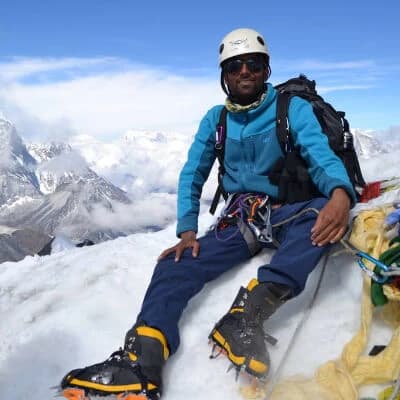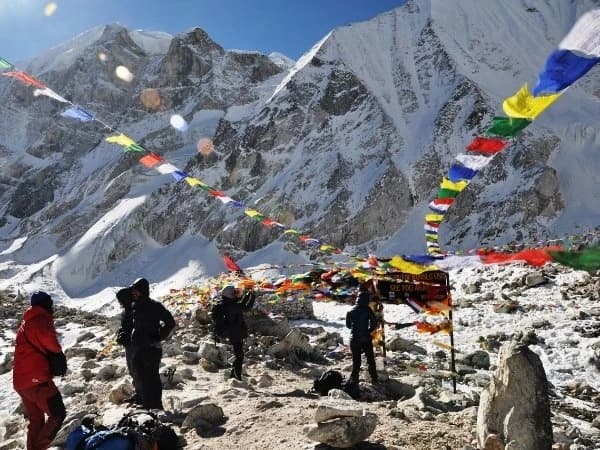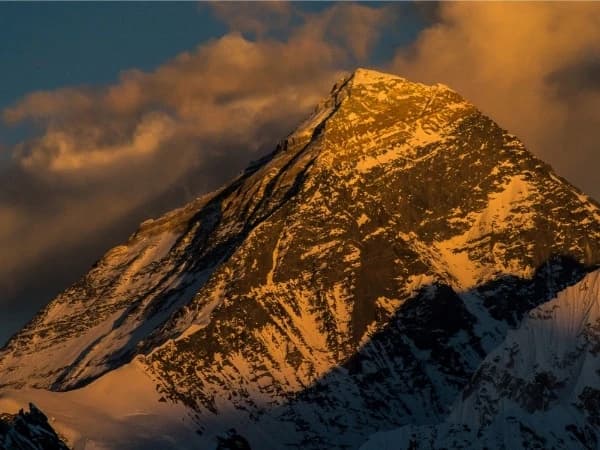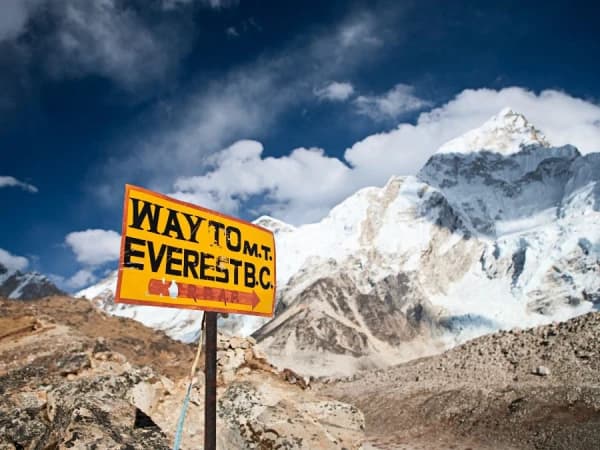Why Timing Matters in the Annapurna Circuit?
The exploration of this second major trekking region in Nepal is no ordinary trek. It is a slow unfolding experience of landscapes, climates and culture that shifts and evolves with every step. From the subtropical valleys to the windswept arid heights, this journey stretches across an immense vertical canvas.
And within that canvas lie the varying microclimates that are sensitive to the turning of the seasons. During the Annapurna Circuit Trek, you move not just across the space but through time as well. The green terraced field gives way to pine forest, alpine meadows and ultimately to the barren and icy highlands.
The timing of your trek shapes how you experience this transition. That’s why it is very crucial to understand the Annapurna Circuit best time. Also, these transitions are not limited to the landscape and climate alone.
The rhythm of village life is also affected by the changing seasons. Teahouses along the trail, which are crucial havens that offer warmth and nourishment to adventurers, may shut down in deep winter. Or, they can be bustling with laughter during the peak seasons.
So, in essence, choosing the best time for the Annapurna Circuit Trek is key for a successful and enriching journey. It really makes a difference between wandering through the mist or gazing across the endless Himalayan horizon, trekking across vibrant and warmth-filled teahouses or trekking through empty and snowbound silence.
Best Time of Year to Do Annapurna Circuit: A Month-by-Month Breakdown
The Annapurna Circuit lives many lives across the year. Each season drapes its own mood and color upon these towering settlements and high passes. Understanding how the trail transforms month by month is key to finding your ideal best time to do Annapurna Circuit.
Below is the unfolding of season-by-season characteristics and allure that you will encounter across different points of the year.

Spring (March, April and May)
As the winter bids farewell, days start to grow longer and the Annapurna Circuit awakens with a sense of renewal. In the lower part of the trekking trails, the splash of white, red and pink rhododendron takes over the landscape. The air, which is freshly cleansed by the winter’s chill also offers incredible clarity.
During the day sky is crystal clear and the panorama of Annapurna, Dhaulagiri and Machhapuchhre is breathtaking at every step. Likewise, the temperatures are moderate and welcoming. Mornings are generally crisp, and afternoons are warm and comfortable. As for night, they are cool and manageable even at higher altitudes.
The remnant of snow might linger at Thorong La Pass during the early part of the season. But, by late April, most part of the route is fully open. Villages start to bustle gently with the busy Himalayan lifestyle and trekkers alike. The balance of vibrant nature and excellent visibility this season offers makes it arguably the best time to hike Annapurna Circuit.
Monsoon/Summer (June, July and August)
After the end of the spring season, the monsoon winds sweep across this landlocked country. Most part of the Annapurna Circuit route is blanketed with rain, especially lower points from Besisahar to Manang. As the downpours are frequent, the trail become muddy and trail at the lower parts are infested with leeches and are prone to landslides.
There is heavy rainfall on most days, particularly in the afternoon and evening. Humidity is high in the lowland and the temperatures remain warmer even at the higher altitudes. However, as the cloud cover is frequent and views of the peaks are often blocked.
The trekking trails are slippery and muddy below 3,000 meters. The section from Jagat to Chame is especially treacherous during the heavy rainfall period. As landslides are a serious risk in different sections of the Marsyangdi Valley, trekkers are often forced to stop their journey or re-route.
So, if you are looking for a comfortable experience and are not prepared for the slippery trails, the monsoon might not be the best time of year to do Annapurna Circuit. Although people looking for low crowds even mainstream routes prepare themselves for the monsoon adventure.
Autumn (September, October and November)
After the monsoon rain recedes, the mountains start to reappear with striking clarity, marking the start of another peak season, autumn. This is another best time for Annapurna Circuit Trek top contenders, which offers favorable climatic and trail conditions.
During this point of the year, the skies are washed clean, the air is crisp and dry and the entire circuit becomes visually spectacular, embracing the fall beauty. Compared to other seasons, autumn is one of the busiest and most rewarding Annapurna Circuit time.
The weather in general is stable and dry. Temperatures are ideal for outdoor exploration and the Thorong La Pass is reliably passable. So, in overall, most part of the route is in peak condition, which will ensure a comfortable and seamless journey. The extraordinary visibility is one of the most remarkable parts of doing the Annapurna Circuit in autumn.
The views of the stunning Himalayan peak in the Annapurna region stretch till the end of the horizon. Moreover, this is also the core period for cultural experience in Nepal. You get to experience major festivals like Dashain and Tihar during this period.
So, compared to other Annapurna Circuit best months, it is hard to knock off this idealistically perfect season in all aspects from its top position. Most Himalayan trekking enthusiasts prefer being in Nepal during this season in comparison to other points across the year.

Winter (December, January and February)
Although winter is not a trekker's favorite season nor considered the best time for Annapurna Circuit Trek, it does have its own charm. Winter clears the crowds and brings sharp skies. It is also the period when the Himalayan region lives in its full glory.
The landscapes are covered by thick fur of snow and the elevated peaks look more breathtaking than ever. This season is perfect for the daring adventurers who don’t mind the cold. In return, it offers solitude, an intimate sense of connection and accomplishment which cannot be outmatched by other seasons.
Snowfall covers most part of the trail above 4,000 meters. But, the trails below 3,000 meters are dry and peaceful. Ice and snow section on the higher part of the trail makes the progress slow and risky. As for Thorong La Pass it is frequently closed due to heavy snow accumulation on the path.
Comparing Seasons: Pros and Cons
The variation in altitude and geography of the Annapurna region means each season dramatically alters the trekking experience. From the trail conditions, climate, to the quality of views, safety and cultural engagement, there is significant variation across different seasons.
To help you understand your ideal best time to do Annapurna Circuit, here is a deep dive into how season stacks up across the key decision-making factors for trekkers:
Spring (March to May)
Spring is the second most popular trekking season in Nepal after autumn. This season of nature is known for its vibrant beauty, increasingly warm temperatures and stable weather conditions. Here are some of the pros and cons of this peak and a top choice for the best time of year to do Annapurna Circuit.
Pros
- Stable weather and low chance of rain
- Dry, safe and more predictable trail conditions
- Moderate temperatures and even nights are manageable
- Clear skies offer great Himalayan panorama of peaks like Annapurna, Gangapurna, Dhaulagiri, Machhapuchhre, Hiunchuli, Tilicho and other surrounding peaks
- Incredible rhododendron blooms, hills between Ghorepani and Chame are covered with diverse shades of pink red and white
- Open high passes, by mid-April, the snow at Thorong La starts to clear out gradually
- A balanced trail traffic, not as crowded as autumn but still lively with fellow trekkers
Cons
- There might be a remnant of little snow on Thorong La Pass during the early part of the season
- Increasing heat at the lower elevation points
- Haze in late May may slightly affect the long-range visibility
Summer/Monsoon(June to August)
This is the off-season, which is considered the least favorable period for trekking (during the core period). The trails are significantly affected by rain, the atmosphere is cloudy and misty and there is also a threat of landslides.
However, some sections like Upper Mustang, which is in the rainshadow region, remain dry and ideal for trekking in this period.
Pros
- Greenest landscapes of the year
- No crowds and you will have the trail, teahouse and viewpoints mostly for yourself
- Rich cultural interaction, as there are fewer tourists
- Discounted rate to an extent and more flexible itinerary plans
- Rainshadow region like Upper Mustang is completely accessible
Cons
- Heavy rainfall makes the trail muddy and landslide-prone
- Forested sections at the lower parts surge in leeches
- Mountain views are rare due to constant, fog, mist and cloud
- Domestic flights and road transport often face cancellations or long delays
Autumn (September to November)
Autumn is the most popular and stable trekking season. It is ideally the best time to do Annapurna Circuit if you are looking for a memorable and comfortable journey. Autumn offers the clearest skies, driest trail, dependable logistics and the most stunning views of the Himalayan vistas.
You can also expect a vibrant trail life and a bustling teahouse culture. Thanks to its cultural, natural and spiritual elements, autumn is the most beloved season and has always been trekkers’ favorite as best time of year to do Annapurna Circuit.

Pros
- Best weather throughout the year; cool, dry, stable and consistent
- Crytsal clear skies and best visibility of the entire year, peaks look sharper post-monsoon
- Fully open trail without snow or ice blockage, making Thorong La Pass more accessible
- It is also the peak cultural season, some of the biggest festivals like Dashain and Tihar fall in this season
- Trail conditions are also most ideal, rivers are low, bridges are stable and terrains are firm with only a few trail hazards
Cons
- Peak crowds, you can expect packed trails and teahouses, especially during the core part of the season
- Increased demand for rooms, guides and porters can raise the price bar
- Less solitude factors may not be ideal for peace-seekers
Winter (December to February)
Winter season invites low temperatures, snowfall and trail quietness on the mountain. Although it is flawless or a top contender for the best time for Annapurna Circuit Trek, the views remain stunning and the lower trail are still accessible.
However, Thorong La Pass remains impassable due to snow buildup. There is also an increased risk of frostbite or altitude sickness due to frigid air.
Pros
- Stunning clear skies, some of the clearest all year
- Very few trekkers and absolute solitude
- Dry weather in the early part of the season (December), snowfall is more likely in January and February
- Low-season pricing, which aids budget-friendly travel
- Excellent photography conditions as dry air and crisp light, sync perfectly
Cons
- Extreme cold makes it essential to carry heavy gear and equipment for warmth
- Trail and teahouses closure in the higher region due to snow accumulation
- Shorter daylight hours limit the trekking duration and flexibility
- Rescue becomes more difficult in case of emergencies due to isolation
Weather and Temperature Guide
The Annapurna Circuit trail stretches a dramatic range of altitudes from the humid foothills of Besishar to the icy Thorong La Pass. Due to this massive elevation difference and Nepal’s seasonal variation, weather and temperatures fluctuate sharply throughout the trail.
Understanding these changes and weather patterns is crucial for selecting the best trekking window and making a weather-proof packing list. This trek crosses five distinct climatic zones:
|
Altitude Zone
|
Location Examples
|
Climate Type
|
|
Below 1,000 meters
|
Besisahar, Bhulbhule
|
Tropical Climate
|
|
1,000 to 2,000 meters
|
Dharapani, Chamje, Jagat
|
Subtropical Climate
|
|
2,000 to 3,000 meters
|
Pisang, Chame, Timang
|
Temperate Climate
|
|
3,000 to 4,000 meters
|
Manang, Yak Kharka
|
Subalpine Climate
|
|
4,000 to 5,000 meters
|
Thorong Phedi, High Camp, Tilicho Base Camp, Tilicho Lake
|
Alpine Climate
|
|
Above 5,000 meters
|
Thorong La Pass
|
Tundra/Trans-Himalayan Climate
|
Seasonal Weather and Temperature Overview
Now, let’s break down the weather and average temperature conditions month by month based on historical trekking data and based on elevation variations.
|
Season
|
Weather Condition
|
Daytime Temperatures
|
Nightime Temperatures
|
|
Spring (March to May)
|
Dry and stable, snow starts to melt
|
Low Elevation: 15°C to 25°C
Mid Elevation: 10°C to 20°C
High Elevation: 0°C to 12°C
|
Can drop below 0°C
|
|
Monsoon (June to August)
|
Frequent rain in lower sections, trails are muddy, poor visbility
|
Low Elevation: 20°C to 28°C
Mid Elevation:15°C to 22°C
High Elevation: 5°C to 15°C
|
0°C to 10°C
|
|
Autumn (September to November)
|
Crisp, crystal clear and dry, post-monsoon dust settles
|
Low Elevation: 18°C to 23°C
Mid Elevation: 10°C to 18°C
High Elevation: 0°C to 12°C
|
-5°C
|
|
Winter (December to February
|
Very dry, cold and snow accumulation on higher trails
|
Low Elevation:10°C to 20°C
Mid Elevation: 5°C to 12°C
High Elevation: -5°C to 5°C
|
-8°C to -25°C
|
Best Time to Do Annapurna Circuit Trek: Based on Trekker Goals
After a thorough understanding of what this mainstream trekking region is like across, we can say that the best time for Annapurna Circuit Trek is definitely not one-size-fits-all. Your best time of year to do Annapurna Circuit depends on what you hope to experience on the trail.

Here is a breakdown of the optimal trekking period based on specific trekkers' goals to help you plan an ideal journey that truly aligns with your expectations.
- For Best Mountain View and Photography: Spring (March to May) and autumn (September to November) are your Annapurna Circuit best months fi you are going for mountain views and photography. During these seasons, the skies are clearest with minimal haze that unveils breathtaking Himalayan panoramas.
- For Moderate Weather and Comfortable Hiking Conditions: Both spring and autumn are the best periods that offer moderate weather and comfortable hiking conditions. The temperature in these seasons averages around 10°C to 20°C mid-altitude zone, making hiking days pleasant. The trails are also mostly dry, stable and snow-free free so there is a lower risk of heat exhaustion or frostbite.
- For Avoiding Crowds and Seeking Solitude: Monsoon (June to August) and winter (December to February) are you ideal best times to hike Annapurna Circuit if you prefer fewer trekkers, quieter teahouses and more personal interactions. These trekking periods are suitable for experienced trekkers who are comfortable with cold or wet weather and looking for a more immersive journey in solitude.
- For Cultural Experience and Local Festivals: Autumn (September to November) is your Annapurna Circuit Trek best time if you want to add enriching cultural elements to your trek. Some of the major festivals in Nepal, like Dashain, Tihar, Teej, Pachali Bhairab, Mani Rimdu, etc are part of this fall season.
- For Budget Travelers or Flexible Itineraries: During off-seasons like winter and monsoon, trekkers can take advantage of off-season prices for food, gear and lodging in less busy villages. Some teahouses offer a discount or even added services due to few visitors.
- For Adventurers Attempting Side Trails or Tilicho Lake: Again, peak seasons like spring and autumn are your Annapurna Circuit Trek best season if you want to side excursion beyond this circuit trail. Months of these seasons offer clearer access to remote regions with minimal snow or landslide hazards. They are also stable enough to handle technical terrain and unpredictable elevations.
- For Wildflowers and Rhododendron Bloom Enthusiasts: Spring remains the best time to do Annapurna Circuit if your journey is about exploring the peak charms of nature. Besides the burst of red, pink and white rhododendron blooms, the trail is also buzzing with bees and birds, making it a perfect time for nature lovers and biologists.










